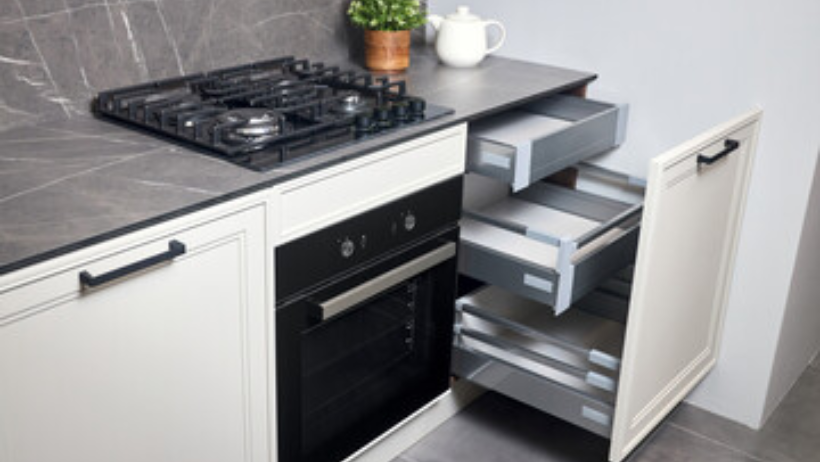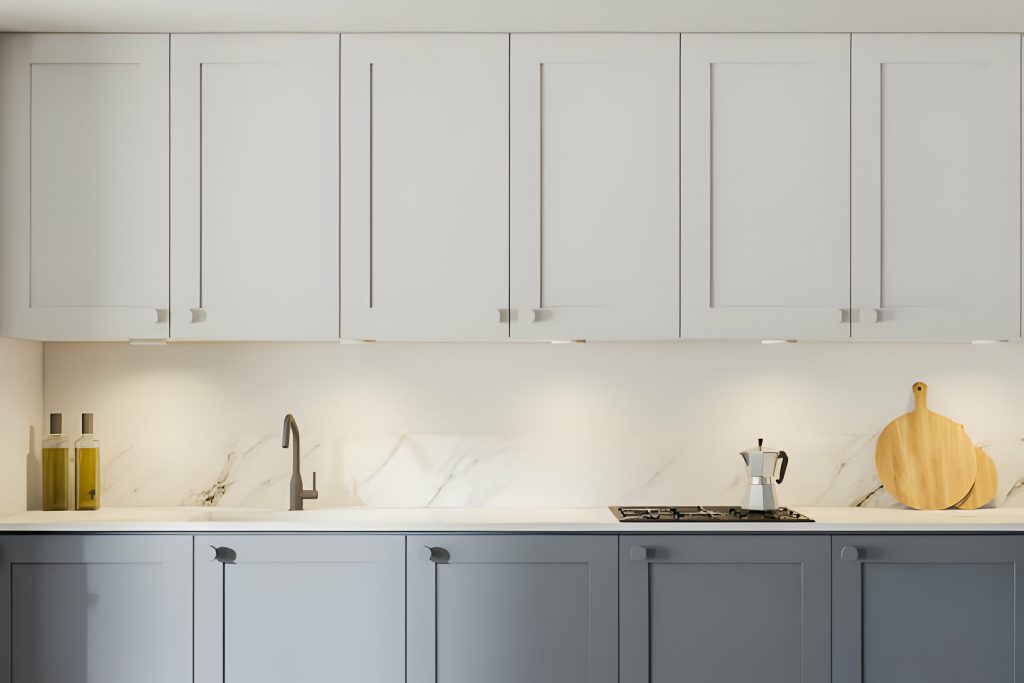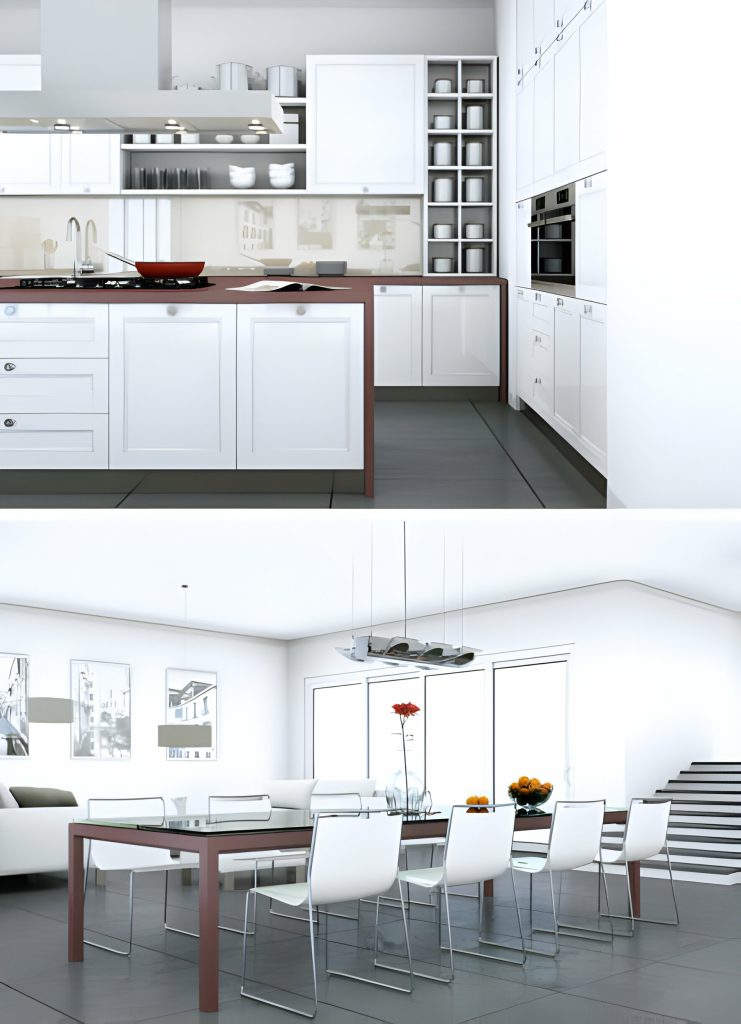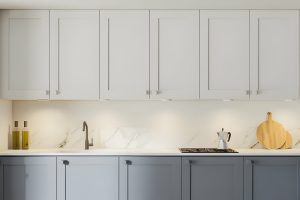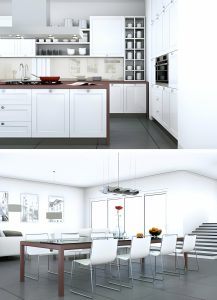Are your kitchen cabinet doors in need of some TLC? Learn how to repair them like a pro with these simple steps. You’ll assess the damage, remove the cabinet doors, fix loose hinges, repair scratches and dents, realign the doors, and apply a fresh coat of paint or stain. Don’t worry – it’s easier than you think! Follow this guide to restore your cabinet doors to their former glory and give your kitchen a fresh, polished look.
Assessing the Damage
Assess the extent of damage to your kitchen cabinet doors. Before you can begin evaluating repairs, it is crucial to thoroughly examine the damage. Start by inspecting each door individually, paying close attention to any visible cracks, scratches, or dents. Take note of the severity of the damage and the affected areas.
Next, assess the functionality of the doors. Do they open and close smoothly? Are there any loose hinges or handles? Check for any signs of warping or misalignment, as these issues can affect the overall performance of the doors.
Once you have determined the extent of the damage, you can decide whether the repairs can be done on your own or if professional assistance is necessary. Simple cosmetic damages, such as minor scratches or scuffs, can often be fixed with DIY methods, such as sanding and painting. However, more complex issues, like deep cracks or broken hinges, might require the expertise of a professional.
Removing Cabinet Doors
To properly address the damage to your kitchen cabinet doors, how can you effectively remove them without causing further harm? When it comes to removing cabinet doors, it is important to follow the correct procedures to ensure that no additional damage is done. Begin by opening the cabinet door fully and locating the hinges. Most cabinet doors are attached to the cabinet frame using hinges that can be easily unscrewed. Use a screwdriver to remove the screws holding the hinges in place, taking care to support the door as you do so to prevent it from falling or getting damaged.
Once the hinges are removed, gently lift the door off the cabinet frame. It is recommended to have another person assist you with this step to avoid any mishaps. Place the removed door on a flat, stable surface, taking care not to scratch or damage the surface. This is especially important if you plan on painting or polishing the doors later on.
Fixing Loose Hinges
Now that you’ve successfully removed the cabinet doors, it’s time to address the issue of loose hinges. Don’t worry, fixing this problem is easier than you might think. By using hinge tightening techniques, you can ensure that your cabinet doors are secure and functioning properly. In some cases, you may even need to replace worn-out hinges to achieve the best results.
Hinge Tightening Techniques
If you’re experiencing loose hinges on your kitchen cabinet doors, it’s important to address the issue promptly to prevent further damage. Loose hinges can cause the door to sag, not close properly, or even fall off completely. Fortunately, there are hinge tightening techniques that can help you fix the problem.
One technique is to tighten the screws that hold the hinges in place. Start by checking if the screws are loose and if they are, use a screwdriver to tighten them. Another technique is to use hinge lubrication to reduce friction and improve the hinge’s movement. You can apply a small amount of lubricant, such as WD-40, to the hinge pins and moving parts.
If these techniques don’t work or if the hinges are damaged beyond repair, hinge replacement may be necessary. In this case, you can purchase new hinges that match the style and size of your current ones. Simply remove the old hinges and install the new ones using the appropriate screws.
Table: Hinge Tightening Techniques
| Technique | Description |
|---|---|
| Tightening screws | Check for loose screws and tighten them with a screwdriver. |
| Hinge lubrication | Apply lubricant to reduce friction and improve hinge movement. |
| Hinge replacement | If the hinges are damaged, replace them with new ones that match the style and size of the old. |
Replacing Worn-Out Hinges
To replace worn-out hinges and fix loose hinges on your kitchen cabinet doors, you will need to follow a few simple steps:
- Remove the old hinge: Start by unscrewing the screws that hold the hinge in place. Use a screwdriver or drill to do this carefully, ensuring you don’t damage the cabinet or door.
- Choose the right replacement hinge: Measure the dimensions of the old hinge and find a suitable replacement. Make sure the new hinge matches the style and finish of your existing hardware.
- Install the new hinge: Position the new hinge in place and align it with the screw holes. Secure it by screwing it tightly into position.
- Test the hinge: Open and close the cabinet door to check if the hinge is working properly. Make any necessary adjustments to ensure smooth movement.
Regular hinge maintenance is crucial to prevent future issues. Lubricate the hinges with a silicone-based lubricant to reduce friction and prolong their lifespan. Inspect them periodically and tighten any loose screws to keep them in good condition.
Repairing Scratches and Dents
To repair scratches and dents on your kitchen cabinet doors, start by assessing the damage and gathering the necessary materials. Scratches and dents can be unsightly and compromise the overall appearance of your cabinets. Luckily, with the right approach, you can restore them to their former glory.
First, examine the extent of the scratches and dents. If they are minor, you may only need to fill the cracks and sand the affected area. For deeper scratches and larger dents, you may need to employ more advanced repair techniques.
To fill cracks, you will need a wood filler that matches the color of your cabinet doors. Apply the filler to the damaged area, using a putty knife to smooth it out. Allow it to dry thoroughly before moving on to the next step.
Once the filler is dry, use sandpaper to gently sand the repaired area. Start with a coarse grit sandpaper to level the surface, then switch to a finer grit to achieve a smooth finish. Sand in the direction of the wood grain to avoid creating additional damage.
After sanding, wipe away any dust with a clean cloth. You can then apply a matching finish or paint to blend the repaired area seamlessly with the rest of the cabinet door. With patience and attention to detail, your kitchen cabinet doors can look as good as new.
Realigning Cabinet Doors
To realign your cabinet doors, start by checking for any gaps or misalignment along the edges. This is a common issue that can occur over time due to changes in humidity or improper installation. Here are four steps to help you repair and adjust the alignment of your cabinet doors:
- Identify the problem areas: Inspect the doors and note any gaps, uneven spacing, or misalignment. This will help you determine the extent of the adjustment needed.
- Repair warped doors: If you notice that the doors are warped, you will need to fix them before attempting to realign them. Place a damp cloth on the concave side of the door and apply heat using an iron. This will help to reshape the wood and eliminate any warping.
- Adjust door alignment: Depending on the type of hinges your cabinet doors have, you can use a screwdriver or an Allen wrench to loosen the screws and make minor adjustments. Move the door up, down, left, or right as needed to achieve proper alignment. Tighten the screws once the desired position is achieved.
- Test the alignment: Close and open the cabinet doors to check if the alignment has improved. Make any necessary adjustments until the doors open and close smoothly without gaps or misalignment.
Applying a Fresh Coat of Paint or Stain
Now that you’ve repaired your kitchen cabinet doors, it’s time to give them a fresh coat of paint or stain to bring them back to life. When it comes to color options, you have a wide range to choose from to match your kitchen’s style. Before applying the paint or stain, make sure to properly prepare the surface by cleaning and sanding it. Finally, to ensure durability, use the right finishing techniques such as applying multiple thin coats and using a topcoat for added protection.
Color Options for Cabinets
Choose from a variety of color options to give your kitchen cabinets a fresh new look by applying a fresh coat of paint or stain. Whether you want to go for a bold and vibrant color or a more subtle and classic look, there are plenty of choices available. Here are some popular color options for cabinet doors:
- White: A timeless choice that adds brightness and a clean aesthetic to your kitchen.
- Gray: A versatile color that complements various cabinet door materials and styles.
- Navy Blue: Adds a touch of sophistication and depth to your kitchen.
- Natural Wood Stain: Enhances the beauty of the cabinet door’s natural grain and texture.
When selecting a color, consider the existing color scheme of your kitchen and the overall style you want to achieve. Don’t be afraid to experiment and choose a color that reflects your personal taste and complements your kitchen’s design.
Preparing the Surface
After selecting the color for your kitchen cabinet doors, the next step is to properly prepare the surface before applying a fresh coat of paint or stain. Surface preparation is crucial for ensuring that the new finish adheres properly and lasts long. The first step in surface preparation is to remove any existing paint or stain. This can be done by using sandpaper or a chemical paint stripper. Sanding techniques play an important role in achieving a smooth and even surface. Start by using a coarse-grit sandpaper to remove any roughness or imperfections. Then, switch to a finer-grit sandpaper to create a smooth finish. Be sure to sand in the direction of the wood grain to avoid damaging the surface. Once sanding is complete, wipe down the surface with a damp cloth to remove any dust or debris. Now, your kitchen cabinet doors are ready for a fresh coat of paint or stain.
Finishing Techniques for Durability
To ensure durability and a professional finish, you can apply a fresh coat of paint or stain to your kitchen cabinet doors using the following finishing techniques:
- Prepare the Surface: Before applying a new coat of paint or stain, make sure to clean the surface of the cabinet doors thoroughly. Remove any grease, dirt, or old finish by using a mild detergent and a scrub brush. Rinse the doors with clean water and allow them to dry completely.
- Sand the Surface: Use a fine-grit sandpaper to lightly sand the cabinet doors. This will help to smooth out any imperfections and create a better surface for the new finish to adhere to. Be sure to sand in the direction of the wood grain to avoid creating visible scratches.
- Apply Primer: Applying a primer before painting or staining will help to create a smooth and even surface. Choose a high-quality primer that is designed for use on wood surfaces. Apply the primer using a brush or roller, following the manufacturer’s instructions. Allow the primer to dry completely before moving on to the next step.
- Apply Paint or Stain: Finally, apply the paint or stain of your choice to the cabinet doors. Use a brush or roller to apply an even coat, working in the direction of the wood grain. Allow the first coat to dry completely, then apply additional coats as needed to achieve the desired color and finish. Be sure to allow each coat to dry before applying the next.
